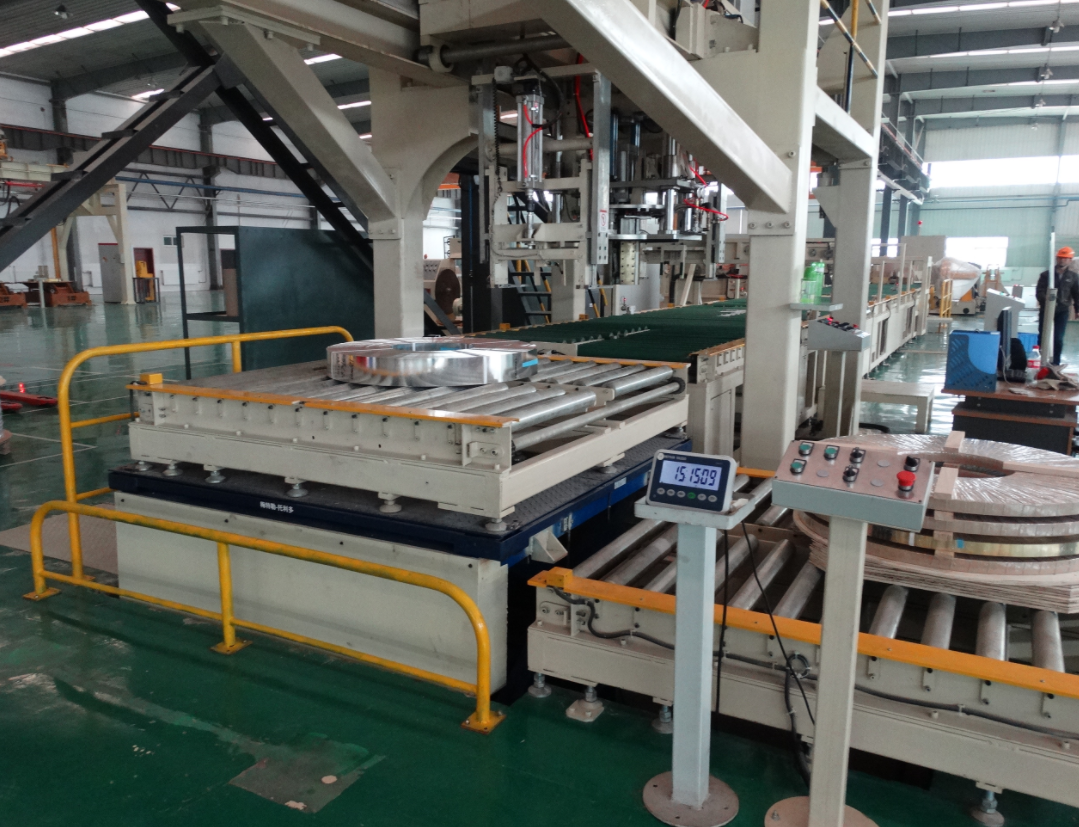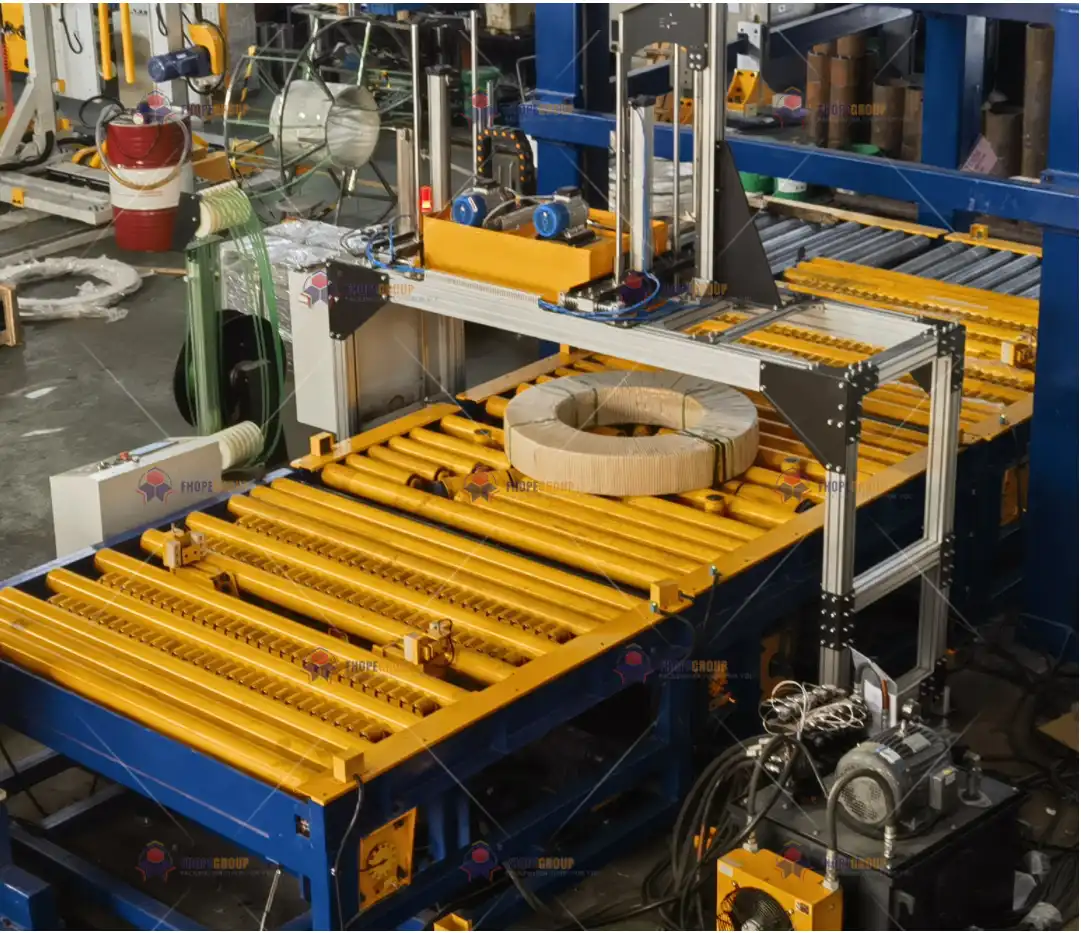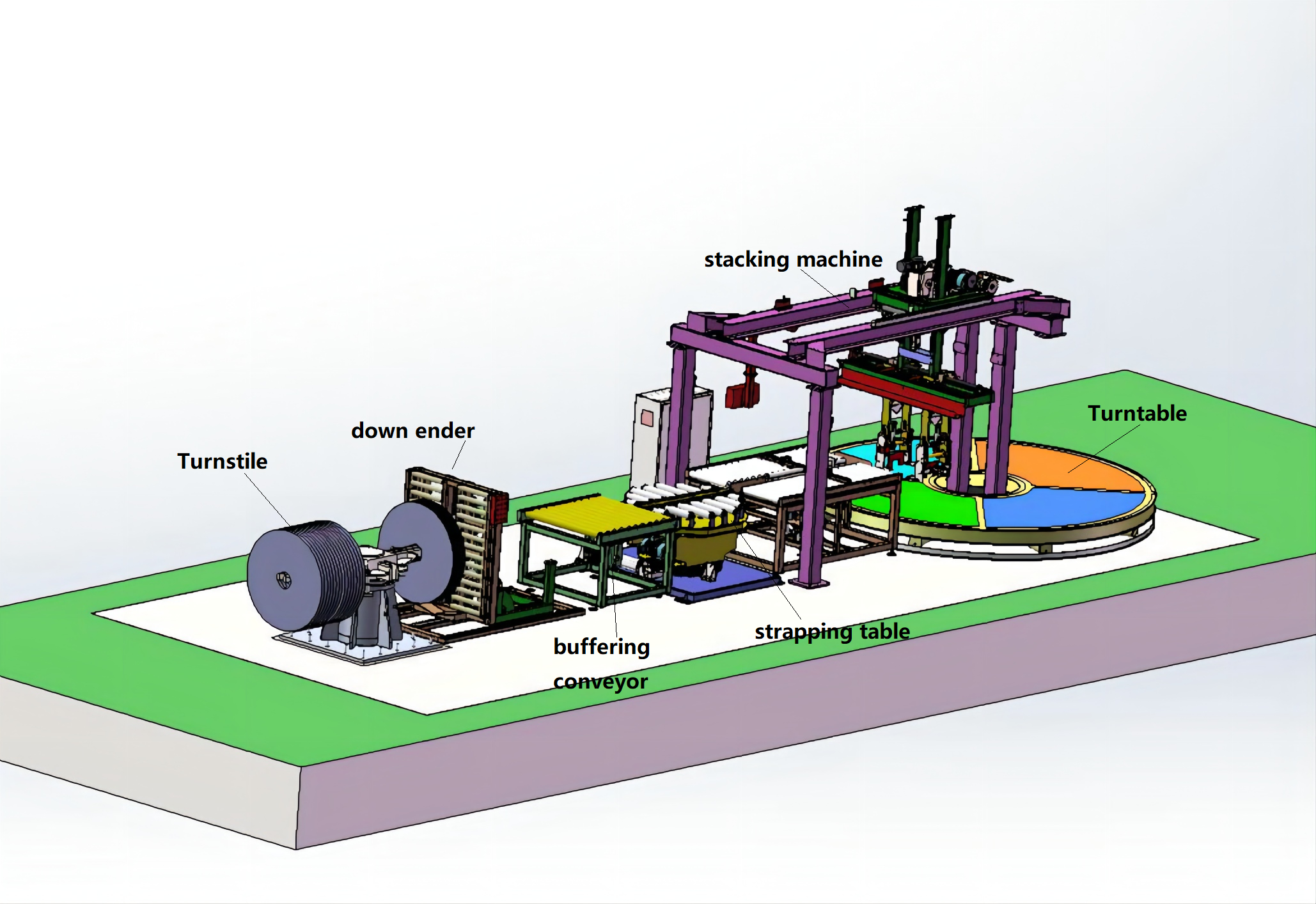Running a steel or wire coil operation in Malaysia presents unique challenges. Your packaging line is the last defense before your product faces the world, but it's often fighting a battle against its own environment. The constant heat and humidity can lead to frequent machine breakdowns, while older equipment burns through energy and materials, driving up your operational costs. You know that bottlenecks at the packaging stage are costing you money and delaying shipments, but finding a robust solution that can withstand these harsh industrial conditions feels like a constant struggle.
To improve coil packaging efficiency in Malaysia's harsh industrial environments, you must select machines built with robust, corrosion-resistant components, implement smart automation to reduce manual dependency, and integrate systems that monitor both machine health and material usage to combat the effects of heat and humidity. This approach focuses on building a resilient and cost-effective packaging line that directly addresses the core challenges of the climate.

As an engineer who has walked the factory floor and later built my own packing machine company, I've seen firsthand how the right equipment can transform an operation. It’s not just about speed; it's about reliability, cost control, and choosing a system that works for you, not against you. Let's break down the key areas where you can make significant improvements and build a packaging line that thrives, even in the toughest conditions.
How Can We Protect Packaging Machines from Malaysia's Heat and Humidity?
In Malaysia, the air itself can feel like an enemy to your machinery. The high humidity relentlessly attacks metal surfaces, leading to rust and corrosion that can seize up moving parts. At the same time, the high ambient temperatures can cause electrical cabinets to overheat, leading to nuisance trips and premature failure of critical components like PLCs and drives. A single failure caused by these environmental factors can stop your entire production line, causing costly downtime and making it impossible to meet your production targets.
The best way to protect your packaging machines is to specify equipment built for these conditions from the start. This involves choosing machines with stainless steel or specially coated frames, using NEMA-rated or IP-rated electrical enclosures to seal out moisture and dust, and installing dedicated cooling systems for the control cabinets. Combining these design features with a disciplined maintenance schedule using high-temperature lubricants creates a machine that is truly resilient.

When I talk to clients, especially those in tropical climates like Malaysia, I always emphasize that we need to think beyond the machine's basic function. We have to engineer it for the environment. I remember a client in Southeast Asia whose main wrapper PLC kept failing intermittently. They spent weeks troubleshooting, blaming the programming and the power supply. When my team went to the site, we found the issue was much simpler: the control cabinet was in a hot, poorly ventilated area, and the internal temperature was exceeding the PLC's operating limits. The constant overheating was slowly damaging the processor. We installed a simple, cost-effective vortex cooler on the cabinet door. This small device, powered by compressed air, dropped the internal temperature by 20 degrees Celsius. The problem disappeared overnight. This experience taught me a valuable lesson: sometimes the most complex problems have simple, physical solutions. It’s about anticipating these issues in the design phase.
Building for the Environment
A machine's longevity in a place like Malaysia is determined by choices made before it's even built. It starts with materials. While standard carbon steel is cheaper, it's a poor choice for a humid environment. We must consider better alternatives.
-
Material Selection: Using SUS304 stainless steel for the machine frame and key structural components is an excellent first line of defense against corrosion. For even harsher conditions, such as coastal areas with salt in the air, upgrading to SUS316 is a worthwhile investment. For less critical parts, a high-quality powder coating over sandblasted steel can provide a durable, non-porous barrier.
-
Component Protection: The brain of the machine—the electrical cabinet—is the most vulnerable. We must protect it. Specifying cabinets with an IP (Ingress Protection) rating of IP65 or higher ensures they are sealed against dust and jets of water. This prevents humid air and conductive dust from settling on circuit boards and causing shorts.
Proactive Defense Systems
Beyond passive protection, we can add active systems to combat heat.
-
Cabinet Cooling: As in my story, an air conditioner or vortex cooler for the main electrical panel is not a luxury; it's a necessity. It maintains a stable operating temperature for sensitive electronics, dramatically increasing their lifespan and reliability.
-
Mechanical Considerations: The choice of lubricant is also critical. Standard grease can break down or become too thin at high temperatures. Using high-temperature synthetic lubricants ensures that bearings and moving parts remain properly protected, reducing friction and wear.
Here’s a breakdown of how these strategies compare:
| Protection Strategy | Key Action | Primary Benefit | Relative Cost |
|---|---|---|---|
| Material Upgrade | Use SUS304/SUS316 stainless steel for the frame. | Prevents rust and structural degradation. | High |
| Electrical Sealing | Specify IP65-rated electrical cabinets. | Protects electronics from humidity and dust. | Medium |
| Active Cooling | Install a cabinet air conditioner or vortex cooler. | Prevents overheating and electronic failure. | Medium |
| Proper Lubrication | Use high-temperature synthetic lubricants. | Reduces friction and wear on moving parts. | Low |
What Automation Level is Right for an Aging Malaysian Steel Plant?
You may be running a plant with equipment that has served you well for over 15 years, operated by an experienced but aging workforce. You understand the need to modernize to stay competitive, but the idea of a fully robotic, "lights-out" factory feels overwhelming, expensive, and perhaps not even suitable for your operations. Investing too heavily in complex technology that your current team cannot maintain is a real risk. However, doing nothing means falling further behind, struggling with the inconsistencies and high costs of manual labor. The challenge is to find that perfect balance—the sweet spot of automation.
The right level of automation for most aging plants is a semi-automated system. This practical approach automates the most physically demanding, repetitive, and time-consuming tasks like coil loading, strapping, wrapping, and labeling. At the same time, it keeps your skilled operators in charge of overall line supervision, quality control, and handling any exceptions. This strategy delivers significant efficiency gains and safety improvements without the massive investment and steep learning curve of a fully autonomous system.

I worked with a steel mill owner in Mexico, a man named Javier who was in a very similar situation. He was a brilliant engineer who had built his company from the ground up and trusted his team immensely. His packaging line was a major bottleneck, relying on manual labor that was slow and physically taxing. He wanted to improve but was wary of technology that would make his experienced foremen feel obsolete. We designed a semi-automated line for him. A coil car would automatically pick up the coil from the slitting line and place it on a turntable. The machine then automatically centered, strapped, and wrapped the coil. However, his trusted operator was still stationed at a control console, able to oversee the process, perform final quality checks, and make adjustments as needed. The result? They increased their packaging throughput by over 40% and dramatically improved worker safety. More importantly, they did it without needing to hire a new team of robotics specialists. They leveraged technology to empower their existing team, not replace them.
Finding Your Automation "Sweet Spot"
Automation isn't an all-or-nothing choice. It's a spectrum. Let's look at the options.
Level 1: Manual Augmentation
This is the most basic level. It involves adding simple mechanical aids to a manual process. Think powered conveyors instead of forklifts for short moves, or a basic turntable wrapper that requires an operator to manually attach and cut the film. It reduces some physical strain but offers minimal gains in speed or consistency.
Level 2: Semi-Automation (The Strategic Choice)
This is the level I recommended for Javier, and it's often the best fit for established mills. Here, a sequence of tasks is automated, but an operator initiates and oversees the process. A typical semi-automated coil packaging line includes:
- Automatic Coil Loading: A coil car or tilter moves the coil into the packaging station.
- Automatic Strapping: The machine feeds, tensions, seals, and cuts the strap.
- Automatic Wrapping: The orbital wrapper applies stretch film, and an automatic cut-and-clamp system finishes the cycle.
- Automatic Labeling: A printer-applicator applies the shipping label.
The operator's role shifts from manual labor to system management, which is a much more efficient use of their experience.
Level 3: Full Automation
This is the "Industry 4.0" vision. The packaging line is fully integrated with the plant's Manufacturing Execution System (MES). Coils are tracked and moved by autonomous guided vehicles (AGVs), and the entire process runs with minimal human intervention. This requires a massive capital investment, a high level of technical expertise on-site, and is best suited for new, greenfield projects.
Here is a comparison to help you decide:
| Automation Level | Initial Investment | Labor Savings | Maintenance Complexity | Operational Flexibility |
|---|---|---|---|---|
| Manual Augmentation | Low | Low | Low | High |
| Semi-Automation | Medium | High | Medium | Medium |
| Full Automation | Very High | Very High | High | Low |
For most existing plants in Malaysia, the path to improved efficiency and profitability lies squarely in semi-automation.
How Do Modern Packaging Lines Reduce Energy and Material Waste?
The fluctuating costs of electricity and the ever-increasing price of packaging consumables like stretch film and strapping can erode your profit margins. Every meter of wasted film, every unnecessary strap, and every kilowatt-hour consumed by an inefficient motor is a direct hit to your bottom line. When you walk your factory floor and see half-used rolls of film in the bin or hear the constant hum of old hydraulic power packs, you know you are losing money. It's frustrating, and it's not sustainable.
Modern coil packaging lines are engineered specifically to combat this waste. They use energy-efficient servo motors and variable frequency drives (VFDs) that consume significantly less power than older hydraulic or constant-speed systems. Critically, they feature advanced powered pre-stretch carriages that can stretch film by up to 300%, effectively turning one meter of film into four. This single feature can cut your film consumption by more than half, delivering a powerful and immediate return on investment.

When I started my own packing machine factory, I was obsessed with controlling costs. Every dollar counted. One of the first major upgrades we invested in for our own internal processes was a new stretch wrapper. The key feature I was looking for was the powered pre-stretch system. Our old machine used a simple mechanical brake for tension, which meant we were barely getting any stretch. We switched to a model with a 250% pre-stretch carriage. The impact was immediate and staggering. Our monthly bill for stretch film dropped by nearly 60%. That money went directly back into the business, allowing us to invest in other areas. This is why it's one of the first things I discuss with clients like you who are focused on operational costs and ROI. The savings are real, measurable, and start from day one.
Targeting Energy Waste
A machine's energy consumption is a major hidden cost. Modern designs attack this in several ways.
- Electric over Hydraulic: Traditional packaging machines often used hydraulic power packs to drive movements. These systems are powerful but notoriously inefficient. The hydraulic pump often runs continuously, even when the machine is idle, consuming electricity. Modern machines use all-electric servo motors. They consume power only when they move, resulting in energy savings of 30-50% or more.
- Variable Frequency Drives (VFDs): For larger motors, like those on conveyors or the wrapping ring, VFDs are essential. A VFD allows the motor to ramp up and down smoothly and run at the precise speed required, rather than running at full speed all the time. This eliminates huge inrush currents on startup and matches energy use directly to the workload.
Slashing Material Consumption
This is where the fastest ROI is often found.
- Powered Pre-Stretch: This is the most important technology for film savings. The system uses two rollers rotating at different speeds to stretch the film before it's applied to the coil. A 300% pre-stretch setting means 1 meter of film is stretched to 4 meters. This not only cuts film usage by up to 75% but also creates a stronger, more secure wrap with better load containment.
- Automatic Cut and Clamp: At the end of a wrap cycle, older machines often leave a long "tail" of film that an operator must cut and tuck in. This is wasteful and messy. A modern automatic cut-and-clamp system cleanly cuts the film close to the coil and heat-seals it, eliminating this waste entirely.
Here is how these technologies deliver savings:
| Technology | Type of Saving | Typical Reduction Achieved |
|---|---|---|
| Powered Pre-Stretch | Material (Film) | 50% - 75% |
| All-Electric Design | Energy | 30% - 50% (compared to hydraulic) |
| VFDs on Motors | Energy | 15% - 25% (compared to constant speed motors) |
| Auto Cut & Clamp | Material (Film) | Eliminates film tails, saving 1-2 meters per coil |
How Can a Packaging Partner Help with ROI and Digital Transformation?
You understand that you need to invest in new equipment to solve your efficiency problems and prepare for the future. But you are not just buying a machine; you are making a significant capital investment that needs to deliver a clear return. The risk can feel substantial. What if the new line doesn't achieve the promised savings? What if it's a nightmare to integrate with your existing plant management systems? You need more than a salesperson quoting a price. You need a strategic partner who understands your operational goals and can help you navigate the complexities of both financial justification and digital integration.
A true packaging partner helps you calculate and prove the ROI before you spend a single dollar. They will work with you to conduct a detailed cost-benefit analysis, quantifying savings in labor, materials, and energy to calculate a clear payback period. For digital transformation, they ensure the machine is "Industry 4.0 ready" with the correct sensors, PLCs, and communication protocols (like OPC-UA or Profinet) so it can seamlessly share data with your factory's MES or SCADA systems, turning your packaging line into an intelligent data source.

My mission with SHJLPACK is built on this very idea. When I started my journey, I was an engineer on the factory floor. I saw the gap between what the machine suppliers promised and what the factory actually needed. Now, as a factory owner myself, I am dedicated to bridging that gap. My goal is not just to sell a machine. It's to share the knowledge that helped me achieve my own success. We work with our clients as partners. We help them build the business case for their investment because I have seen firsthand how the right equipment can help a business grow. When my clients succeed, we succeed. It’s a simple philosophy, but it guides everything we do. We are here to provide a total solution, not just a product.
From Purchase to Partnership
The difference between a simple supplier and a strategic partner is stark.
The ROI Calculation
A partner doesn't just give you a price; they help you justify it. This involves a collaborative analysis:
- Baseline Current Costs: We work together to document your current spending on labor (operators per shift), materials (film/strap usage per coil), energy, and estimated downtime costs.
- Project Future Costs: Based on the new machine's specifications, we project the new, lower costs for these same categories.
- Calculate Payback: With this data, we can calculate a realistic payback period for your investment. This is the hard data you need to present to your board or financial team.
Enabling Your Digital Future
A partner also thinks about how the machine fits into your larger factory ecosystem.
- Data-Rich Equipment: We ensure the machine is equipped with the right IoT sensors to monitor critical data points: cycle times, fault codes, motor temperature, material consumption, and overall equipment effectiveness (OEE).
- Seamless Integration: The machine's control system (PLC) must be able to speak the same language as your plant's central brain (MES/SCADA). We ensure it has the correct communication protocols—like Ethernet/IP, Profinet, or OPC-UA—to make this connection simple and effective. This allows for real-time production monitoring and unlocks capabilities like predictive maintenance.
This table shows the difference in approach:
| Area of Focus | "Just a Supplier" Provides... | "Strategic Partner" Delivers... |
|---|---|---|
| ROI Analysis | A basic quote. | A detailed payback calculation based on your operational data. |
| System Integration | Standard control panel. | An "Industry 4.0 ready" machine with the right communication protocols. |
| After-Sales Support | Reactive service calls. | Proactive maintenance planning and remote diagnostic support. |
| Training | Basic operator manual. | On-site training for both operators and maintenance teams. |
Conclusion
Improving packaging efficiency in Malaysia requires robust machines and a smart strategy. Focus on environment-proofing, strategic automation, and waste reduction with a partner who understands your long-term goals.





